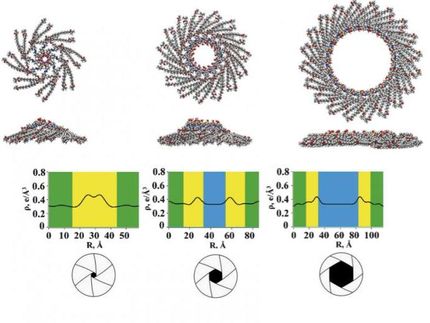Reversible Writing with Light
Self-assembling nanoparticles take their cues from their surroundings
Advertisement
The medium is the message. Dr. Rafal Klajn of the Weizmann Institute's Organic Chemistry Department and his group have given new meaning to this maxim: A method they have now demonstrated for getting nanoparticles to self-assemble focuses on the medium in which the particles are suspended; these assemblies can be used, among other things, for reversibly writing information.

Nanoparticles in a light-sensitive medium scatter in the light (left) and aggregate in the dark (right). This method could be the basis of future-quot; re-writable paper-quot.
Weizmann Institute of Science
This approach is an elegant alternative to present methods that require nanoparticles to be coated with light-sensitive molecules; these then switch the particles' state when light is shined on them. According to the group's research putting regular, uncoated nanoparticles into a light-sensitive medium would be simpler, and the resulting system more efficient and durable than existing ones. The possible applications range from rewritable paper, to water decontamination, to the controlled delivery of drugs or other substances.
The medium, in this case, is made up of small "photo-switchable" (or "photoresponsive") molecules called spiropyrans. In the version of the photoresponsive molecule employed by Klajn and his group, absorbing light switches the molecule to a form that is more acidic. The nanoparticles then react to the change in acidity in their environment: It is this reaction that causes the particles to aggregate in the dark and disperse in the light. This means that any nanoparticles that respond to acid - a much larger group than those that respond to light - can now potentially be manipulated into self-assembly.
By using light to control the reaction, one can precisely govern when and where the nanoparticles will aggregate. And since nanoparticles tend to have different properties if they are floating freely or clustered together, the possibilities for creating new applications are nearly limitless.
The advantages of the medium-based approach are clear. For one, the particles do not seem to degrade over time - a problem that plagues the coated nanoparticles. "We ran one hundred cycles of writing and rewriting with the nanoparticles in a gel-like medium - what we call reversible information storage - and there was no deterioration in the system. So you could use the same system over and over again," says Klajn. "And, although we used gold nanoparticles for our experiments, theoretically one could even use sand, as long as it was sensitive to changes in acidity."































































